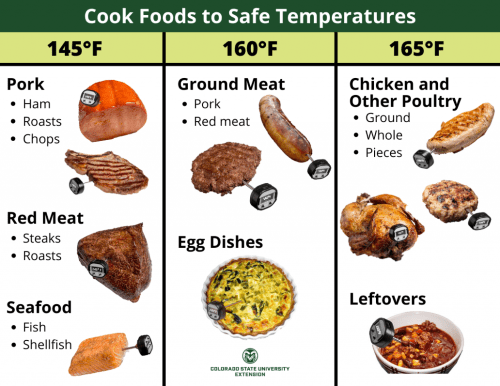With there being an estimated amount of 48 million cases of foodborne illnesses in the U.S. each year, the importance of proper and safe handling of foods should be stressed. One method to lower the risk of getting food poisoning is by cooking meats to a safe internal temperature. By cooking meats to a minimum internal temperature, most harmful bacteria such as Salmonella and E.coli that may be present in raw or undercooked meats will be destroyed.
Checking Temperature: You can insert a clean food thermometer into the thickest part of the meat and wait for the reading to stabilize (15 to 20 seconds). The reading should be at the recommended safe internal temperature or higher (see chart, below). If not, then the meat should continue to be cooked until it does. The thermometer should be properly washed with soap and warm water and reinserted into the meat when you think it has reached the appropriate temperature to take another reading. If the meat doesn’t reach the minimum internal temperature then it is considered unsafe to eat.
TIP: When taking readings it is important to make sure that the thermometer doesn’t come out the other end of the meat and doesn’t touch the pan, bone, or fat to ensure an accurate temperature is being measured. The minimum safe internal temperature varies for different types of meat, so it is crucial that the correct temperature is used in accordance with what is being cooked. The table below features some common meats and their minimum internal temperature to be considered safe.

